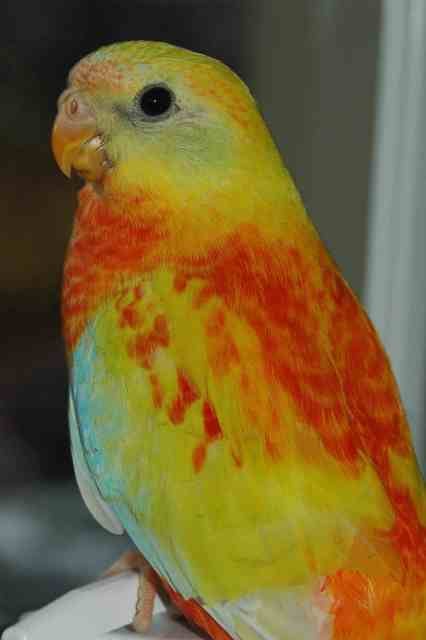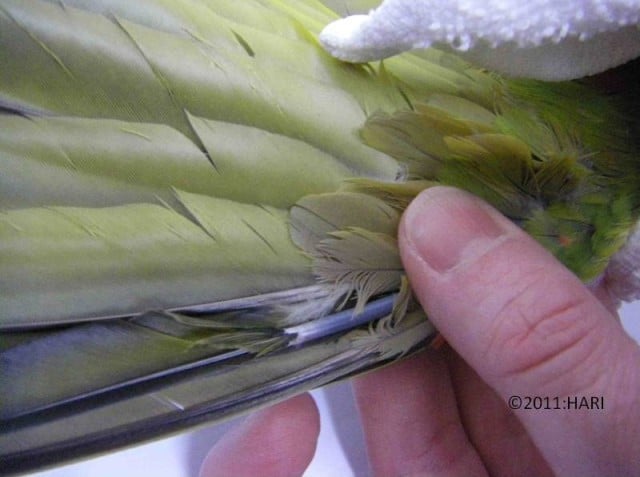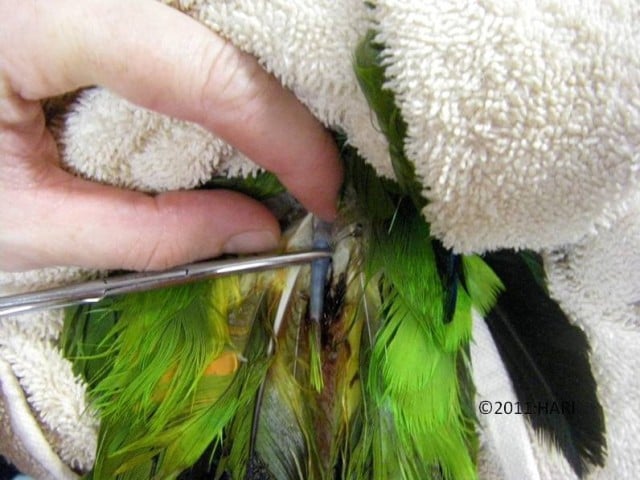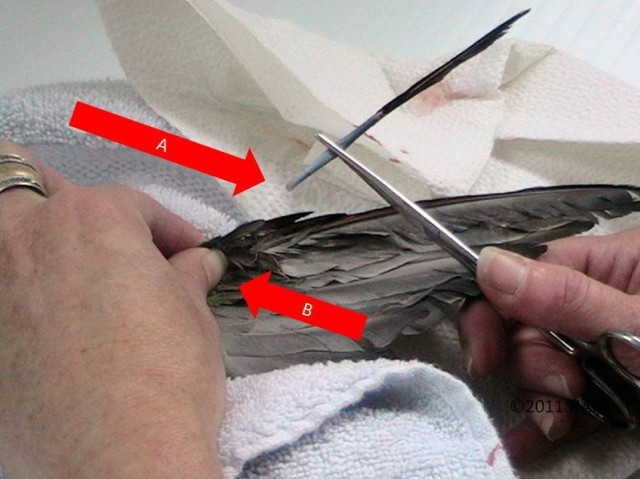Your cart is currently empty!

HARI Official Brand Site

The most challenging aspect of dealing with such an emergency is using safe and proper towel restraint technique.
Whether a companion bird is flighted or clipped, a new flight feather presents a risk to the bird’s well being when broken and bleeding. After the new feather has completely emerged, the feather shaft or quill dries up and no longer presents a risk at all. Yet, if the growing feather, as indicated by length and by the shaft being full of blood, becomes accidentally damaged from either toys or an accidental fall, the shaft breaks. The bird can lose a great deal of blood in a short period of time. This is a true emergency and needs to be dealt with immediately! In most cases the broken blood feather can be handled easily by the avian caretaker. The most challenging aspect of dealing with such an emergency is using safe and proper towel restraint technique. As this is easier said than done, especially when presented with an emergency, please refer to towel restraint for HARI suggestions on safe and non-invasive towel restraint.

The most challenging situation arises when the bird is overweight or suffers from respiratory conditions. We recommend that these challenged birds be sprayed down to cool the body temperature. It is imperative to follow the below listed guidelines when dealing with any broken blood feather!

After determining that the bleeding feather needs to be removed, you must ensure a proper grip with hemostat forceps. Apply pressure to the skin at the base of the feather to be removed. Failure to do so could cause pain and rip the skin surrounding the blood feather. This can cause further complications and profuse bleeding. It is recommended to place the forceps perpendicular to the direction of the feather when gripping the feather and pull swiftly. Placement of the forceps in a vertical alignment with the feather, then pulling, can cause the feather to tear.

The pulled feather must be intact, complete with the rounded base or the inferior umbilicus (A). A broken feather shaft left inside the bird can result in a feather cyst or infection. Once the feather has been removed, apply pressure at the feather follicle site (B) for about 10 seconds to ensure the bleeding has stopped. After successfully removing the blood feather, clean the site, return the bird to a clean cage and monitor him closely.


Explore our list of commonly asked questions from fellow parrot owners just like yourself